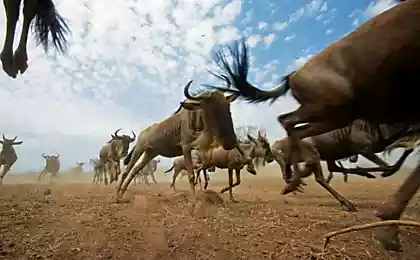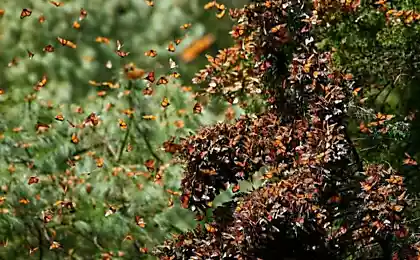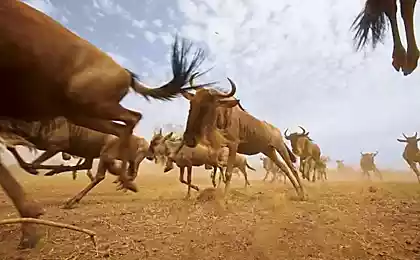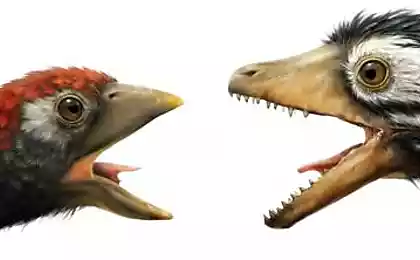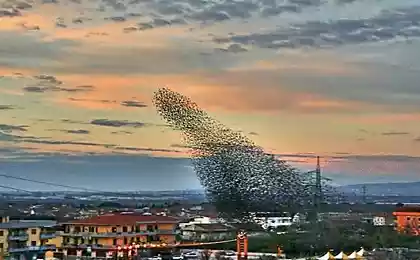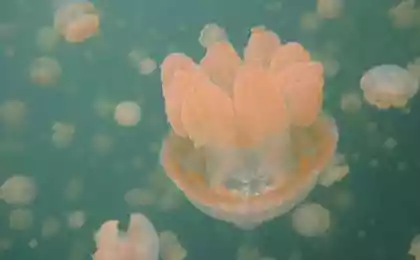955
About the migration of animals (17 photos)
"Post from the Past": According to the dictionary, the migration of animals - is the movement of living organisms resulting from changes in the conditions of existence of or in connection with the passage of the development cycle. But how is it beautiful! Hundreds and thousands of animals, birds and fish gather in herds, flocks and jambs and go on a long journey, bewitching photographers.
1. Africa: white-bearded wildebeest migration. Every year more than a million wildebeest and about two hundred thousand zebras run after seasonal rains to water bodies, skirting the loop in the 485 km around Tanzania and Kenya. (Photo Credit: A Anup Shah)
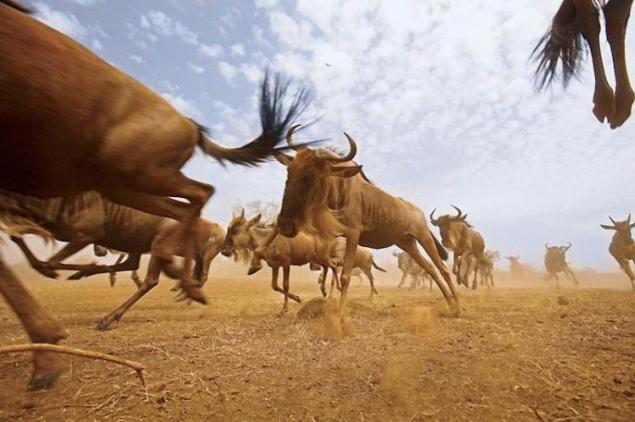
2. Christmas Island in the Indian Ocean may seem tiny, but there are more than 50 million red crabs that make one of the most spectacular migrations. Traveling from the depths of the forest to the coast of the island, these crabs fiery red size of a saucer struggling with fierce ants once a year getting to the water and back again. (Photo Credit: A NGT)
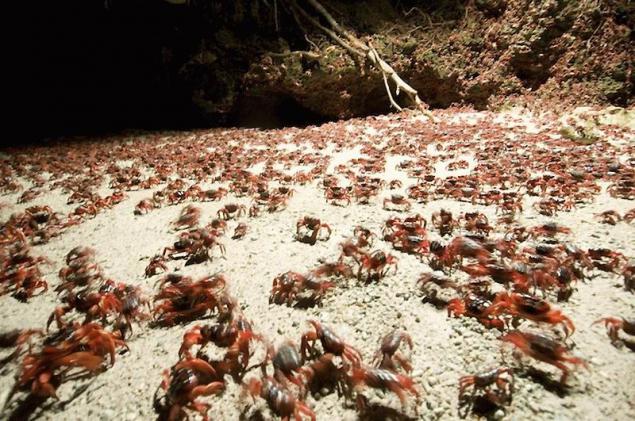
3. Falkland Islands: black-browed albatrosses with a two-meter wingspan plan to land for mating. They were closely watched by predatory southern Phalcoboenus that all winter waiting for the albatrosses will lay, and hatch chicks. Female male waiting on land to keep watch the egg until it flies to the sea and come back with a full beak fish. (Photo Credit: A NGT)
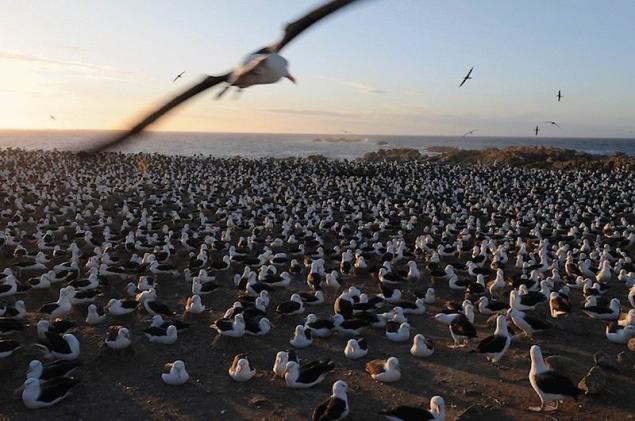
4. Christmas Island: every year millions of red crabs crawling over rocks and cliffs into the water. (Photo Credit: A NGT)
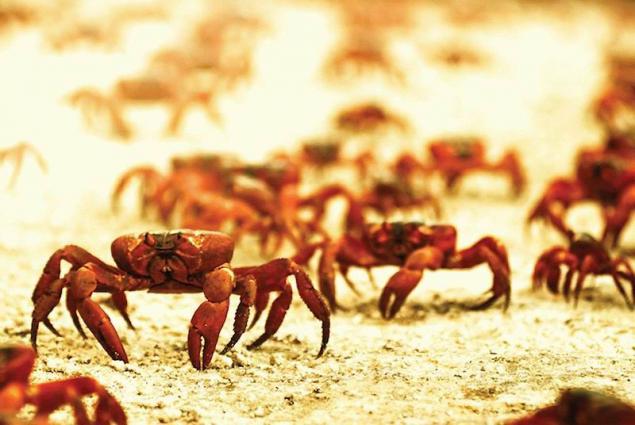
5. Michoacan, Mexico: no monarch butterfly will not be able to do all the way migration from Mexico to the north of Canada and back. Instead generations make this trip to the baton. (Photo Credit: A NGT)
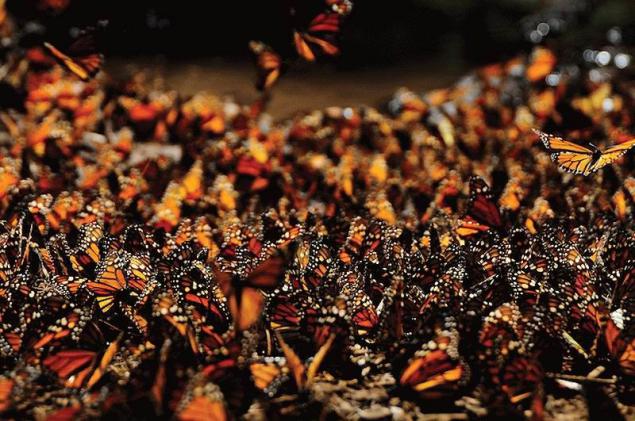
6. Starting your journey off the coast of Alaska, the Pacific walrus, whose body is not made for a long swim, use floating ice for resting and mating during the migration to the coast of Russia and back. But in recent years, the ice becomes smaller, and it is not enough at all walruses. (Photo Credit: A PAUL NICKLEN / National Geographic)
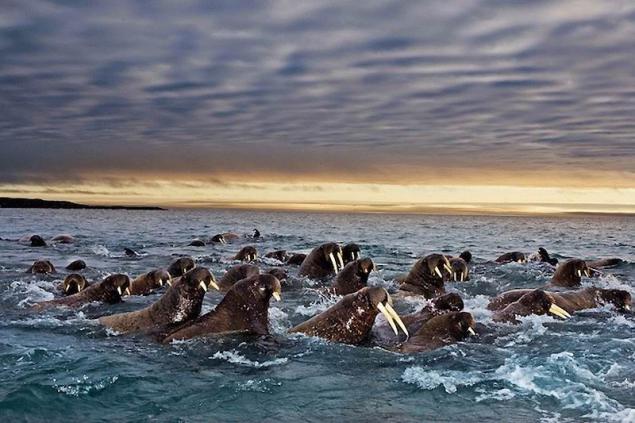
7. Grand Teton National Park, Wyoming West. Previously pronghorns were many, and they proudly and freely migrated. Now this ancient migration support a herd of 200 head. Their migration from the mountains to the valleys and back has always been difficult, but now it has only worsened since on their way any fences, boundaries, canals, and other obstacles that lead to the extinction of this rare species of ungulates. Photo Credit: (A Joe Riis)
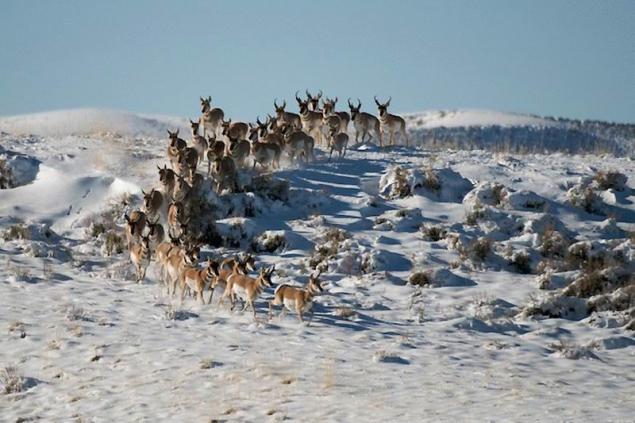
8. The Sahara Desert: Rare Mali elephants make the longest migration on earth - 490 km around the heart of Mali in West Africa. The only way to survive here - move from one source of food and water to the other. (Photo Credit: A Carlton Ward Jr. / CarltonWard.com)
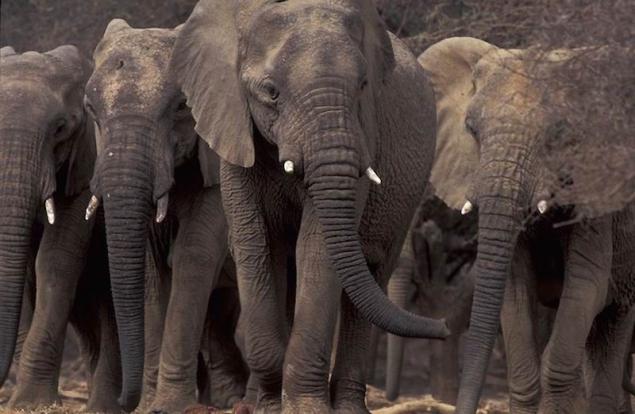
9. Botswana, Africa: zebra migration in Botswana was captured on film to create a movie for «National Geographic». Many young mothers usually can not stand this long journey. (Photo Credit: A Beverly Joubert / National Geographic Stock)
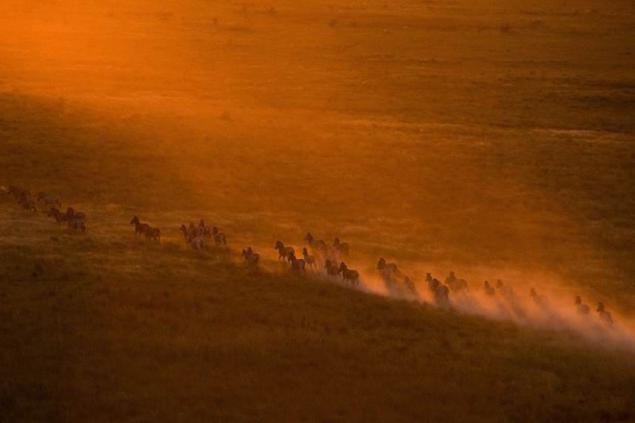
10. Mexico: one of the worst predators of the deep sea - the great white shark - is also one of the largest migrant. It can travel thousands of miles in the open ocean, traveling each year from Hawaii to northern Mexico. (Photo Credit: A RAUL TOUZON / National Geographic Stock)
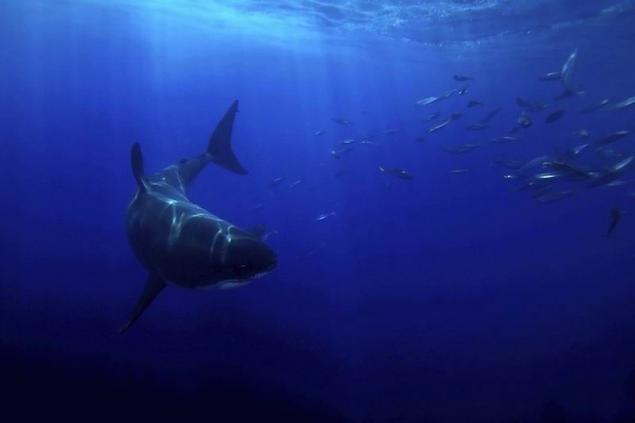
11. Azores, Portugal: sperm can travel over a distance of several hundred thousand kilometers from the ocean to the ocean. Traveling alone most of my life, every year the males swim to the Azores, joining the other, and then together they go to females who are waiting for them. (Photo Credit: A HIROYA MINAKUCHI / MINDEN PICTURES / National Geographic Stock)
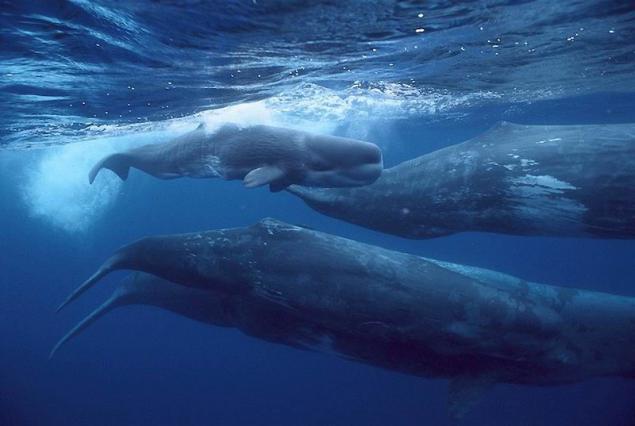
12. Falkland Islands: red-adult penguins Rockhopper every day go to the sea and back to eat, and then climb the steep cliffs, where their chicks hidden from the winds. Three months later, the Penguins again jump into the sea for the new season, and their chicks, trying to avoid the albatross will test wings, flying away from the land on which they can not return in the next 10 years. (Photo Credit: A Daisy Gilardini / Getty Images)
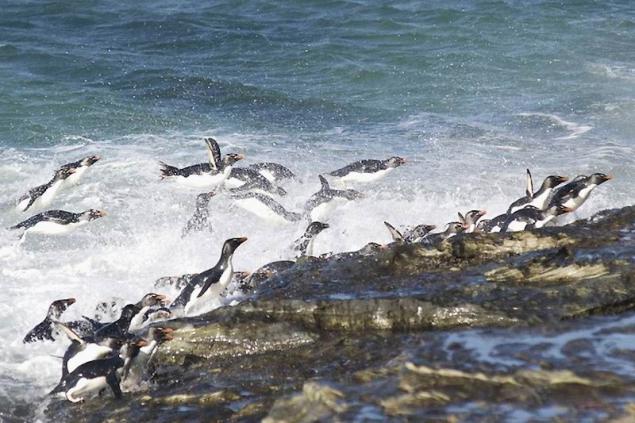
13. Mysterious whale shark - the largest fish in the sea. As ironic as it may be, but the survival of this huge creature depends on the microscopic sea creatures. Whale sharks feed on plankton. (Photo Credit A National Geographic Television)
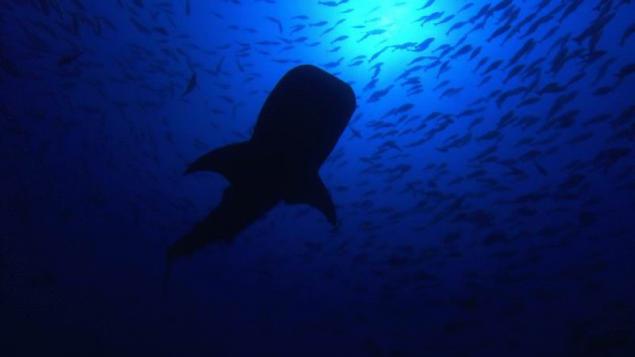
14. Upper Mississippi River Valley: white pelicans breed in North America and migrate south for the winter, will fly to Central America in flocks of 150-180 individuals. (Photo Credit A NGT)
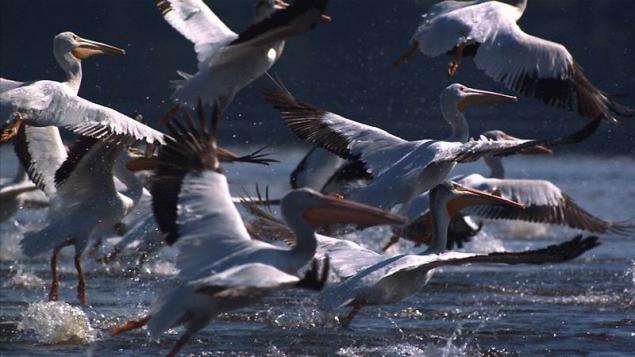
15. Pacific walruses travel accordingly movement of the ice. When winter ice expands, they migrate to the south. When he breaks down and leaves in spring and summer, they are returning to the north. (Photo Credit: A NGT)
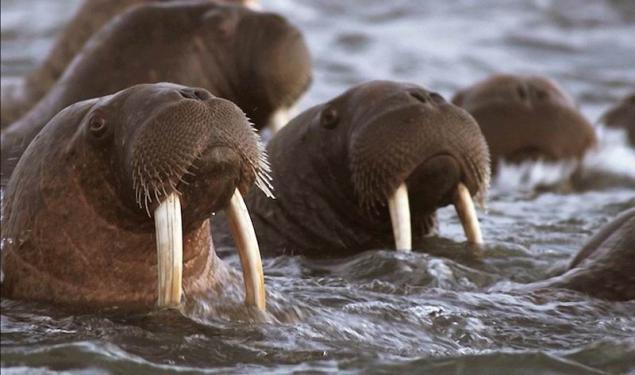
16. Jellyfish Lake, Palau: five million jellyfish swim in the lake every day, following the east to the west in the morning and afternoon during the amazing migration. Nights jellyfish immersed to a depth of 13 meters, absorbing nutrient-rich bacteria that are necessary for their survival. (Photo Credit A NGT)
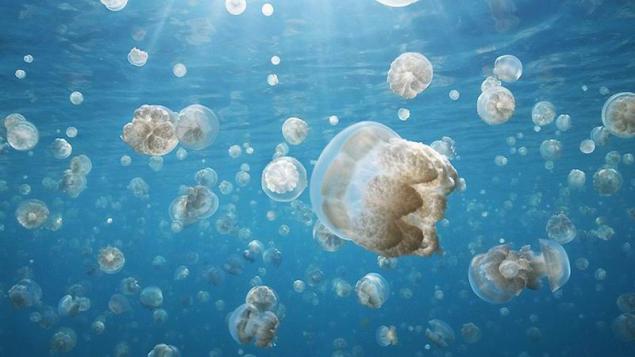
17. Michoacan, Mexico: thanks to new technologies migration of monarch butterflies appears before us in amazing detail. allowing viewers to appreciate their beauty and brightness. (Photo Credit: A NGT)
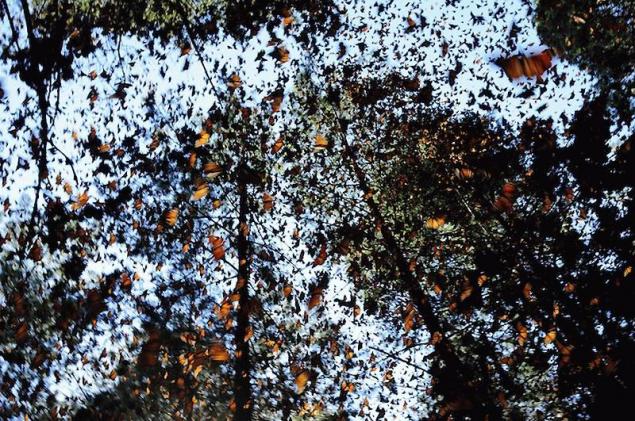
1. Africa: white-bearded wildebeest migration. Every year more than a million wildebeest and about two hundred thousand zebras run after seasonal rains to water bodies, skirting the loop in the 485 km around Tanzania and Kenya. (Photo Credit: A Anup Shah)

2. Christmas Island in the Indian Ocean may seem tiny, but there are more than 50 million red crabs that make one of the most spectacular migrations. Traveling from the depths of the forest to the coast of the island, these crabs fiery red size of a saucer struggling with fierce ants once a year getting to the water and back again. (Photo Credit: A NGT)

3. Falkland Islands: black-browed albatrosses with a two-meter wingspan plan to land for mating. They were closely watched by predatory southern Phalcoboenus that all winter waiting for the albatrosses will lay, and hatch chicks. Female male waiting on land to keep watch the egg until it flies to the sea and come back with a full beak fish. (Photo Credit: A NGT)

4. Christmas Island: every year millions of red crabs crawling over rocks and cliffs into the water. (Photo Credit: A NGT)

5. Michoacan, Mexico: no monarch butterfly will not be able to do all the way migration from Mexico to the north of Canada and back. Instead generations make this trip to the baton. (Photo Credit: A NGT)

6. Starting your journey off the coast of Alaska, the Pacific walrus, whose body is not made for a long swim, use floating ice for resting and mating during the migration to the coast of Russia and back. But in recent years, the ice becomes smaller, and it is not enough at all walruses. (Photo Credit: A PAUL NICKLEN / National Geographic)

7. Grand Teton National Park, Wyoming West. Previously pronghorns were many, and they proudly and freely migrated. Now this ancient migration support a herd of 200 head. Their migration from the mountains to the valleys and back has always been difficult, but now it has only worsened since on their way any fences, boundaries, canals, and other obstacles that lead to the extinction of this rare species of ungulates. Photo Credit: (A Joe Riis)

8. The Sahara Desert: Rare Mali elephants make the longest migration on earth - 490 km around the heart of Mali in West Africa. The only way to survive here - move from one source of food and water to the other. (Photo Credit: A Carlton Ward Jr. / CarltonWard.com)

9. Botswana, Africa: zebra migration in Botswana was captured on film to create a movie for «National Geographic». Many young mothers usually can not stand this long journey. (Photo Credit: A Beverly Joubert / National Geographic Stock)

10. Mexico: one of the worst predators of the deep sea - the great white shark - is also one of the largest migrant. It can travel thousands of miles in the open ocean, traveling each year from Hawaii to northern Mexico. (Photo Credit: A RAUL TOUZON / National Geographic Stock)

11. Azores, Portugal: sperm can travel over a distance of several hundred thousand kilometers from the ocean to the ocean. Traveling alone most of my life, every year the males swim to the Azores, joining the other, and then together they go to females who are waiting for them. (Photo Credit: A HIROYA MINAKUCHI / MINDEN PICTURES / National Geographic Stock)

12. Falkland Islands: red-adult penguins Rockhopper every day go to the sea and back to eat, and then climb the steep cliffs, where their chicks hidden from the winds. Three months later, the Penguins again jump into the sea for the new season, and their chicks, trying to avoid the albatross will test wings, flying away from the land on which they can not return in the next 10 years. (Photo Credit: A Daisy Gilardini / Getty Images)

13. Mysterious whale shark - the largest fish in the sea. As ironic as it may be, but the survival of this huge creature depends on the microscopic sea creatures. Whale sharks feed on plankton. (Photo Credit A National Geographic Television)

14. Upper Mississippi River Valley: white pelicans breed in North America and migrate south for the winter, will fly to Central America in flocks of 150-180 individuals. (Photo Credit A NGT)

15. Pacific walruses travel accordingly movement of the ice. When winter ice expands, they migrate to the south. When he breaks down and leaves in spring and summer, they are returning to the north. (Photo Credit: A NGT)

16. Jellyfish Lake, Palau: five million jellyfish swim in the lake every day, following the east to the west in the morning and afternoon during the amazing migration. Nights jellyfish immersed to a depth of 13 meters, absorbing nutrient-rich bacteria that are necessary for their survival. (Photo Credit A NGT)

17. Michoacan, Mexico: thanks to new technologies migration of monarch butterflies appears before us in amazing detail. allowing viewers to appreciate their beauty and brightness. (Photo Credit: A NGT)


